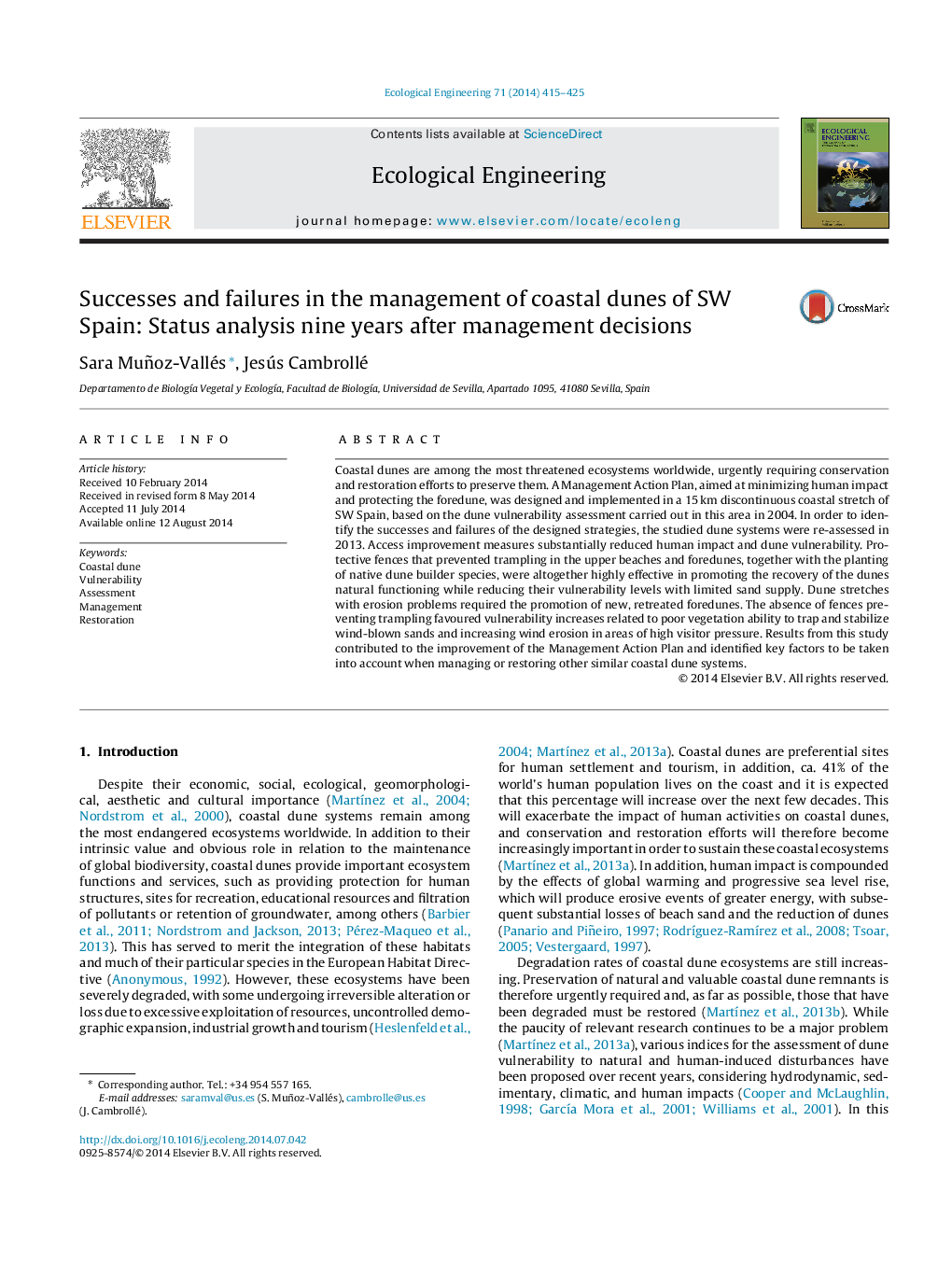| Article ID | Journal | Published Year | Pages | File Type |
|---|---|---|---|---|
| 4389179 | Ecological Engineering | 2014 | 11 Pages |
Abstract
Coastal dunes are among the most threatened ecosystems worldwide, urgently requiring conservation and restoration efforts to preserve them. A Management Action Plan, aimed at minimizing human impact and protecting the foredune, was designed and implemented in a 15Â km discontinuous coastal stretch of SW Spain, based on the dune vulnerability assessment carried out in this area in 2004. In order to identify the successes and failures of the designed strategies, the studied dune systems were re-assessed in 2013. Access improvement measures substantially reduced human impact and dune vulnerability. Protective fences that prevented trampling in the upper beaches and foredunes, together with the planting of native dune builder species, were altogether highly effective in promoting the recovery of the dunes natural functioning while reducing their vulnerability levels with limited sand supply. Dune stretches with erosion problems required the promotion of new, retreated foredunes. The absence of fences preventing trampling favoured vulnerability increases related to poor vegetation ability to trap and stabilize wind-blown sands and increasing wind erosion in areas of high visitor pressure. Results from this study contributed to the improvement of the Management Action Plan and identified key factors to be taken into account when managing or restoring other similar coastal dune systems.
Related Topics
Life Sciences
Agricultural and Biological Sciences
Ecology, Evolution, Behavior and Systematics
Authors
Sara Muñoz-Vallés, Jesús Cambrollé,
